Centipedes are great additions to any garden, helping to control pest species through their predator ways.
Contents
What are centipedes?
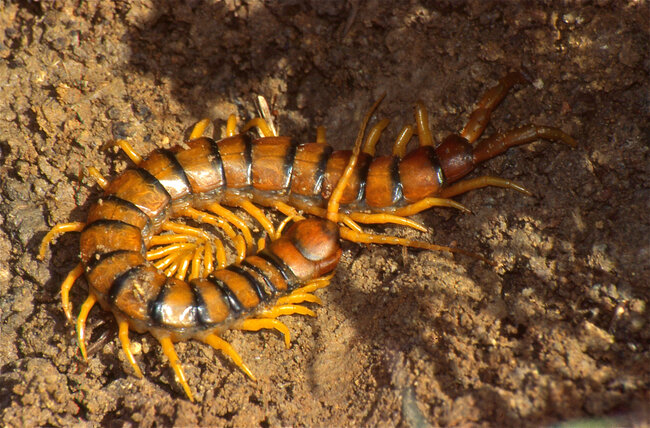
Centipedes are easy to recognize, with their long bodies, and many legs. The most similar group are millipedes, who also have a long body with many legs. There are a number differences between millipedes and centipedes, but the most reliable way to tell them apart is that the millipede has two sets of legs per body segment, whereas centipedes have one set.
Another key difference is that millipedes are generally detritivores, who often eat rotten wood and other waste. Centipedes by comparison, are predators, and are well able to hunt down prey of various sizes, depending on the species.
| Centipede Species | Size (Length) | Habitat | Additional Information/Explanation |
|---|---|---|---|
| House Centipede | 1 to 1.5 inches | Indoor environments, damp areas | House centipedes are commonly found indoors, particularly in basements, bathrooms, and other damp areas. They prey on household pests such as spiders, ants, and silverfish. |
| Garden Centipede | 2 to 3 inches | Moist garden soil, leaf litter | Garden centipedes prefer moist garden soil and leaf litter. They play a beneficial role in the garden ecosystem by feeding on small insects, worms, and other arthropods. |
| Stone Centipede | 1 to 1.5 inches | Under rocks, decaying wood | Stone centipedes are typically found under rocks, logs, and decaying wood. They contribute to the decomposition process by consuming small invertebrates and organic matter. |
| Soil Centipede | 0.5 to 1 inch | Moist soil, leaf litter | Soil centipedes inhabit moist soil and leaf litter, where they feed on small insects, worms, and other soil-dwelling organisms. They help control populations of soil pests. |
It’s thought there are around 8,000 species of centipedes across the world, living in all different kinds of habitats, from rainforests to the desert, even to your own garden. What species you may find in your garden will vary depending on where you live, but there will often be many different kinds, exploiting different niches.
Most of the time, you won’t even notice these little critters are around, as centipedes prefer darkness, and often live within leaf litter, in rock crevices, or within rotting wood. When you’re most likely to come across centipedes is when tidying or digging, as you may expose one under a rock or hidden in the leaf litter.
So the big question is what do all these little arthropods do for your garden? And will they help or hinder your plans?
Also read: Centipedes in Winter: What Happens With Them? Do They Like it?
Benefits
The good news is that centipedes are generally highly beneficial to your garden, providing important services, which can help your plants to thrive.
| Aspect | Benefits | Considerations |
|---|---|---|
| Pest Control | Garden centipedes prey on pests like insects | Some larger centipedes may also feed on beneficial insects |
| Soil Health | Centipedes help with decomposition and nutrient recycling | Excessive centipede populations may indicate an imbalance in the ecosystem |
| Biodiversity Support | Centipedes contribute to overall garden biodiversity | Certain species may become invasive in non-native ecosystems |
| Garden Damage | Most garden centipedes do not cause significant damage | Some larger species may prey on small plants or seedlings |
Helpful predators
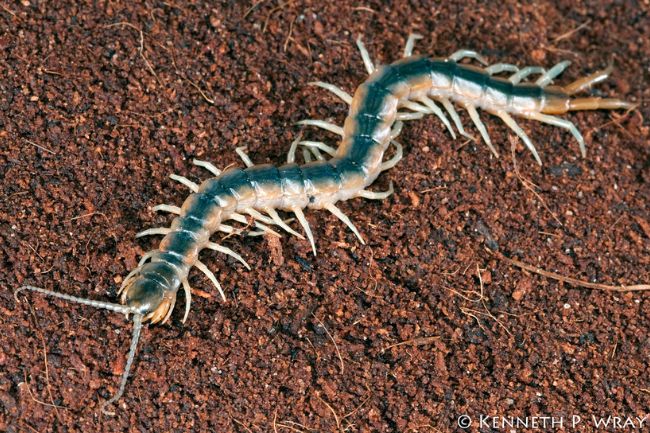
When we think of predators we often think of them as the villains of the natural world, such as dangerous wolves hunting down and killing innocent lambs. However, predators have a vital role to play in the natural environment, and without them the natural balance would fall off kilter.
Most centipedes eat insects and other small arthropods, although some larger species also eat small mammals. Centipedes will hunt along the ground, or moving through log piles, leaf litter or rocky crags.
In order to catch their prey, centipedes have a pair of modified legs that act as fangs, to inject poison into their prey. With most species these fangs are too small to harm humans, but instead are used to capture a wide range of invertebrates.
Generally, centipedes aren’t fussy and will go for whatever they come across that’s not too big to handle. This could be caterpillars, beetle larvae, spiders, ants and much more.
Because they cannot fly, and they prefer damp and dark places, they are much more likely to eat species that also live in these conditions. Many of these species can become garden pests if their numbers rise too high, with some living off plant matter such as tasty leaves or roots.
All gardens can cope with low levels of pests, and these are a natural component of the garden, but too many pests can spell disaster. Like many predator species, centipedes help to strike a balance.
Also read: Centipedes & Climbing Explained: Walls, Beds, & Much More
Organic gardener
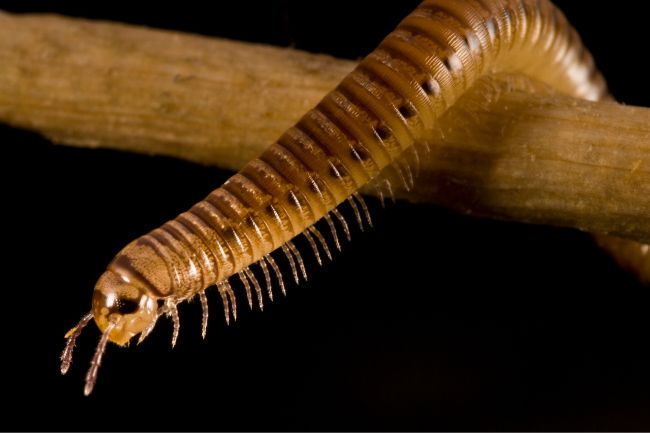
For many people, the easiest way to deal with a pest infestation in the garden is to reach for a nasty pesticide. The problem is that most pesticides are not targeted, and they will kill the beneficial bugs as well as the bad.
In the long run, this can result in fast breeding pest species from returning without a healthy population of predators to control them.
Within agricultural settings, many farmers are opting to encourage predatory invertebrates, rather than reach straight for the pesticide. Ground beetles, spiders and centipedes can all play a part in helping us reduce the amount of toxic chemicals we spray into our environment.
Also read: Centipedes Life Span: How Long do They Live?
Negatives
Toxic companions
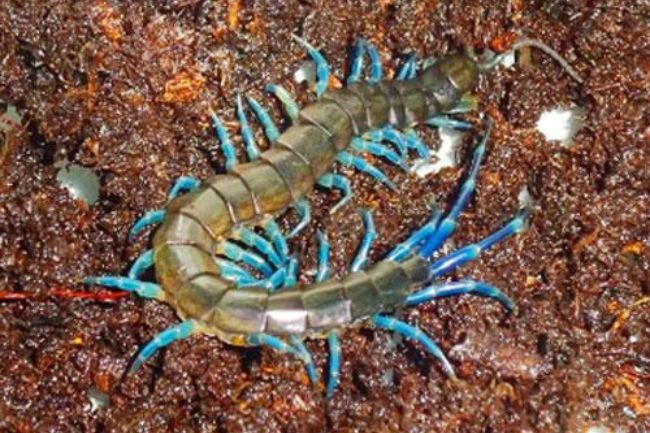
The vast majority of centipedes are not harmful to humans or pets. However, some of the larger species can have a nasty nip. In most cases, this might feel like a wasp sting, for some species though it can be much more painful.
Luckily, most of these more harmful species do not live in people’s gardens, but if you live close to their natural habitats they may wander in.
Mostly, even if a more toxic species does wander into your vegetable patch, they are not interested in making your acquaintance, and will scuttle off if disturbed. The main issues come when accidental interactions occur, or over curious pets get a warning nip. In these cases advice from a doctor or vet can be sought.
Also read: A List of Centipedes that are Poisonous to our Pets
Indiscriminate killers
Although centipedes are great for keeping pests in check, they are not fussy eaters. This means that they won’t distinguish between garden helpers and garden harmers.
Some helpful invertebrates that centipedes might eat include ants, spiders and the larvae of pollinating butterflies. In most cases these species are robust enough to take the hit, but you may want to be wary of centipedes if you have a wormery, as these little creatures will happily eat a tasty worm as part of their diet.
What do centipedes eat in the garden?
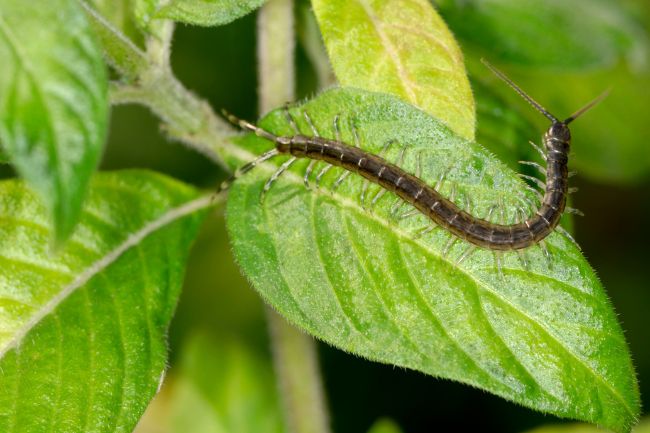
Centipedes have varying diets, depending on where they live and how big they are. Most are fairly unfussy and will eat whatever they are strong enough to catch. As centipedes come in a variety of sizes, from giant centipedes to the tiny house centipede, the prey they can catch can vary a great deal.
Most will however eat small invertebrates such as worms, ants, spiders, slugs and beetles, while larger species branch out to include small mammals and amphibians.
Also read: A List of 5 Centipedes with Blue Legs
How to get rid of them naturally
Generally, getting rid of centipedes is not such a good idea, as they are highly beneficial to your garden.
If you are convinced you need to reduce your centipede numbers however, the best option is to encourage their natural predators. Many species will happily eat centipedes if they come across them, including birds, amphibians and insect eating mammals such as mice or shrews.
Encouraging these animals to make more use of your garden can come in many forms, but appropriately positioned nest boxes for birds is one of the easiest ways to bring in more feathered friends.
Planting can also encourage many of these animals, with birds enjoying the presence of trees and scrubs, while amphibians and mammals like good ground cover. A pond can be a great way to bring in lots of different wildlife, making sure it has wildlife-friendly features like shallow sides.
Another good tip is to make sure mammals and amphibians can get into the garden, by leaving a gap under any fencing, or cutting out small holes at ground level.
All of these should bring more nature into your garden, which will hopefully rebalance predator-prey relationships.

